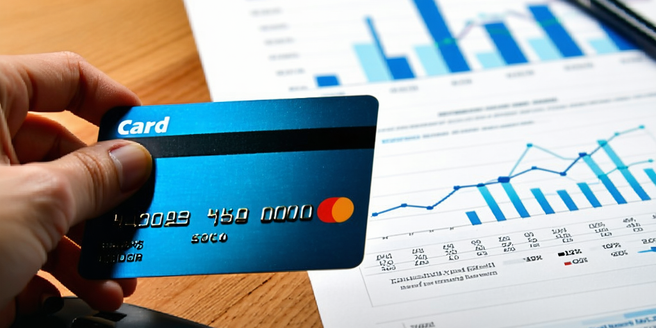Understanding Bad Credit: A Quick Overview
| Factor | Impact on Credit | Solution |
| Payment History | 35% of credit score | Pay bills on time |
| Credit Utilization | 30% of credit score | Keep balances low |
| Length of Credit History | 15% of credit score | Maintain old accounts |
| New Credit Accounts | 10% of credit score | Limit inquiries |
| Credit Mix | 10% of credit score | Diversify credit types |
How Credit Cards Can Help Rebuild Credit
Rebuilding credit after a financial setback can seem challenging, but strategically using credit cards can be an effective way to restore your credit score. Establishing a positive credit history is crucial, and a credit card serves as a tool to demonstrate financial responsibility. By obtaining a secured credit card, which typically requires a refundable deposit matching your credit limit, you can begin to rebuild your credit profile. Consistently making small purchases and paying the entire balance on time each month can lead to positive reports to credit bureaus, gradually boosting your credit score. Additionally, maintaining a low credit utilization ratio – ideally below 30% of your credit limit – is vital in demonstrating sound borrowing habits. Over time, responsible use of a credit card not only enhances credit scores but also opens doors to better financial opportunities and products.
Key Features to Look for in Credit Cards
When choosing a credit card, it’s essential to consider various features that can enhance your financial wellbeing and maximize benefits. First, examine the interest rates. Low-interest rates are crucial if you anticipate carrying a balance, as they minimize the cost of borrowing. Additionally, look for cards offering lucrative rewards programs aligned with your lifestyle. Whether it’s cash back, travel points, or retail discounts, these can offer substantial savings over time. Another key feature is the introductory offers, such as 0% APR on purchases or balance transfers, which provide a financial buffer for big expenses or consolidating debt. Moreover, consider the annual fees and weigh them against the benefits; sometimes, a higher fee can offer enhanced perks that justify the cost. Finally, prioritize security features like fraud protection and zero liability guarantees to ensure your information is safeguarded against unauthorized transactions.
Secured vs. Unsecured Credit Cards: Which to Choose?
When deciding between secured and unsecured credit cards, it’s important to understand their differences and which suits your financial situation best. Secured credit cards are an excellent choice for individuals building or rebuilding their credit history. They require a cash deposit as collateral, typically equivalent to your credit limit. This deposit mitigates risk for the issuer, making approval easier for those with poor or no credit history. With responsible use, secured cards can effectively improve your credit score over time.
On the other hand, unsecured credit cards do not require a deposit and are the more common form of credit. These cards often come with perks and rewards, but they require good credit for approval. For individuals with established credit history and good credit scores, unsecured cards provide greater flexibility and benefits. Carefully evaluate your financial goals and credit standing to choose the right card for your needs.
Top Credit Cards for Bad Credit in 2023
Navigating the world of credit cards can be daunting, especially for those with less-than-stellar credit scores. However, 2023 has introduced versatile options specifically designed to aid individuals in rebuilding their credit. One top contender is the **Credit Builder Card**, engineered to help users establish a positive payment history without the burden of high fees. This card often comes with a modest credit limit, making it manageable and effective for incremental credit score improvement. Another popular choice is the **Secured Credit Card**, which requires a deposit that serves as your credit limit. This card empowers users to utilize credit responsibly, with many issuers reporting to the major credit bureaus, ensuring your good habits do not go unnoticed. These cards not only provide a lifeline to those struggling with bad credit but also pave the way towards greater financial independence.
Tips for Improving Your Credit Score
Improving your credit score is essential for securing better interest rates and financial opportunities. Start by ensuring you pay your bills on time, as payment history significantly impacts your score. Consider setting up automated payments or reminders to avoid any late payments. Reducing your credit utilization ratio is another effective strategy; aim to use no more than 30% of your available credit. You can achieve this by paying down existing debt or requesting a credit limit increase. Regularly review your credit report for errors or inaccuracies and dispute any discrepancies promptly. Diversifying your credit mix, such as having a blend of installment loans and revolving credit, can positively affect your score too. Finally, be cautious with new credit applications; too many inquiries over a short period can temporarily lower your score. Consistent and strategic financial habits are key to boosting your creditworthiness.
Common Mistakes to Avoid with Credit Cards
Credit cards can be powerful financial tools if used wisely, yet many people fall into common traps that can lead to debt and financial strain. One of the most prevalent mistakes is making only the minimum payment each month. While it might seem manageable in the short term, this practice can significantly increase the amount of interest you pay over time, ultimately prolonging debt repayment. Another frequent error is neglecting to read the fine print. Credit card agreements often contain critical details about interest rates, fees, and rewards. Without understanding these terms, you might incur unexpected charges or miss out on valuable benefits. Additionally, maxing out your credit card or maintaining a high balance relative to your credit limit can heavily impact your credit score, reducing your future borrowing power. By understanding these pitfalls, cardholders can use credit cards more effectively and responsibly.
How to Apply for a Credit Card with Bad Credit
Applying for a credit card with bad credit may seem daunting, but it’s more achievable than you might think with the right approach. Start by checking your credit score to understand your standing, as this will guide you in choosing the appropriate card. Focus on credit cards specifically designed for those with poor credit, such as secured credit cards, which require a deposit that doubles as your credit limit, helping to mitigate risk for the issuer. Provide accurate information on your application and consider enlisting the help of a cosigner, if possible, to improve your chances of approval. Additionally, ensure you meet the card’s income requirements. Research different card offers, comparing interest rates, fees, and rewards, to find one that best fits your needs. Remember, responsible use of credit can help rebuild your score over time, opening up future financial opportunities.
Strategies for Managing Credit Card Debt
Managing credit card debt effectively requires a strategic approach to prioritize financial health and stability. One of the most effective strategies is to focus on paying more than the minimum payment each month. This can significantly reduce the interest you’ll accumulate over time, allowing you to pay off the debt faster. Start by listing all your outstanding balances and their respective interest rates. Target the card with the highest interest rate first, a method known as the avalanche strategy, which minimizes total interest payments. Alternatively, consider the snowball method, which targets the smallest debts first for quicker psychological wins that can boost motivation. Additionally, negotiate with your credit card issuer for a lower interest rate or consider transferring balances to a card with lower rates, if feasible. By consistently implementing these techniques, individuals can work towards reducing their credit card debt effectively.
Alternatives to Credit Cards for Bad Credit
If you’re dealing with bad credit, finding alternatives to traditional credit cards is crucial to maintaining financial health and improving your credit score. One option is secured credit cards. These cards require a refundable security deposit, which typically acts as your credit limit. While they work like conventional credit cards, their risk is minimized, as the deposit secures your borrowing. This makes them more accessible for individuals with less-than-ideal credit. Another alternative is prepaid debit cards. These cards allow for purchases up to the preloaded amount, helping manage spending effectively without the risk of debt accumulation. Personal loans from credit unions can also be a viable option, as these institutions often have more lenient lending criteria and lower interest rates compared to banks. Exploring peer-to-peer lending platforms is worth considering too, as they can offer flexible terms tailored to borrowers’ unique situations.



